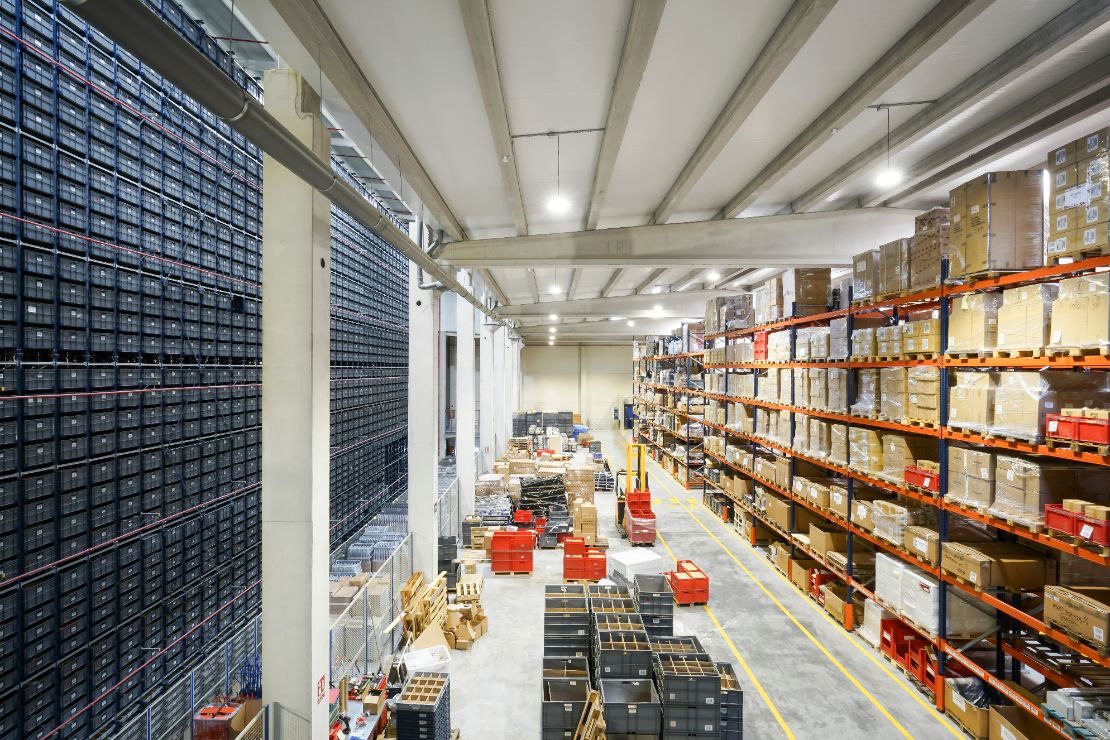Gas Sensors for Warehouses and Logistics Centers: Why They Matter
One forklift malfunction in a closed storage area. One unnoticed propane (C₃H₈) or methane (CH₄) leak from equipment, or a rise in carbon dioxide (CO₂) levels in a poorly ventilated space — that’s all it takes to put workers at risk. Installing the right gas sensor is not optional — it’s a basic part of operational safety.

Why Warehouses and Logistics Centers Need Gas Detection
Unlike chemical plants, warehouses may not seem hazardous. But risks exist — and they’re often invisible. Gas buildup can result from:
- Internal combustion engines (e.g., propane forklifts) — CO₂ and C₃H₈
- Leaks from gas equipment or fuel cylinders — C₃H₈, CH₄
- Storage areas with organic waste or facilities near landfills — CH₄
- Loading and unloading operations in poorly ventilated rooms — CO₂
- Nearby industrial zones or manufacturing sites emitting gases
Common Gases Found in Warehousing Environments
To choose the right sensor, first identify which gases are likely present:
- Carbon dioxide (CO₂): from forklift exhaust, dry ice storage, or poor ventilation
- Propane (C₃H₈): from fuel-powered equipment such as forklifts and heaters
- Methane (CH₄): in facilities near landfills, natural gas pipelines, or waste processing areas
- Other possible gases may include carbon monoxide (CO), ammonia (NH₃), or hydrogen (H₂), depending on specific equipment and processes used
Key Benefits of Installing Gas Sensors
A sensor system tailored to logistics operations helps:
- Detect dangerous leaks early
- Prevent workplace incidents
- Ensure compliance with safety standards and regulations
- Support real-time alerts via building management systems
Where to Install Gas Detectors in Warehouses
Correct sensor placement is critical for effective monitoring. Follow these recommendations:
- Near forklift routes and engine bays — for detecting CO₂ and C₃H₈ from fuel-powered equipment
- Above or beside battery charging areas
- Inside cold storage and refrigeration areas — for monitoring CO₂ buildup in poorly ventilated spaces
- At ceiling level for lighter gases (e.g., hydrogen)
- At breathing zone height for heavier gases like CO₂ and C₃H₈
- Near exits and emergency pathways
Selection Criteria: What Makes a Sensor Suitable?
When evaluating equipment, focus on features that align with real conditions:
- Compatible with target gas (CO₂, CH₄, C₃H₈, etc.)
- Clear visual/audible alarm systems
- Real-time digital output for remote monitoring
- Robust housing for dusty or damp zones
- Simple calibration and maintenance process
- Certified for industrial or commercial use
- Fail-safe mechanisms to flag system faults
Steps to Implement a Gas Monitoring System
Use this checklist to build a complete detection solution:
- Survey facility and identify gas risks
- Select sensor technologies for target gases
- Determine optimal sensor placement points
- Connect sensors to alarm or building systems
- Set up maintenance and calibration schedule
Common Oversights That Reduce System Effectiveness
Avoid these pitfalls when installing gas detectors:
- Placing sensors too far from likely leak sources
- Overlooking areas where CO₂, CH₄, or C₃H₈ may accumulate
- Using residential-grade equipment
- Disabling alarms due to nuisance alerts
- Failing to train staff on response protocols
Safety with Precision
A reliable gas sensor for warehouse safety protects workers, reduces downtime, and builds trust across operations. Choosing the right gas detector for logistics center use is about understanding your environment — and preparing for what can’t be seen.